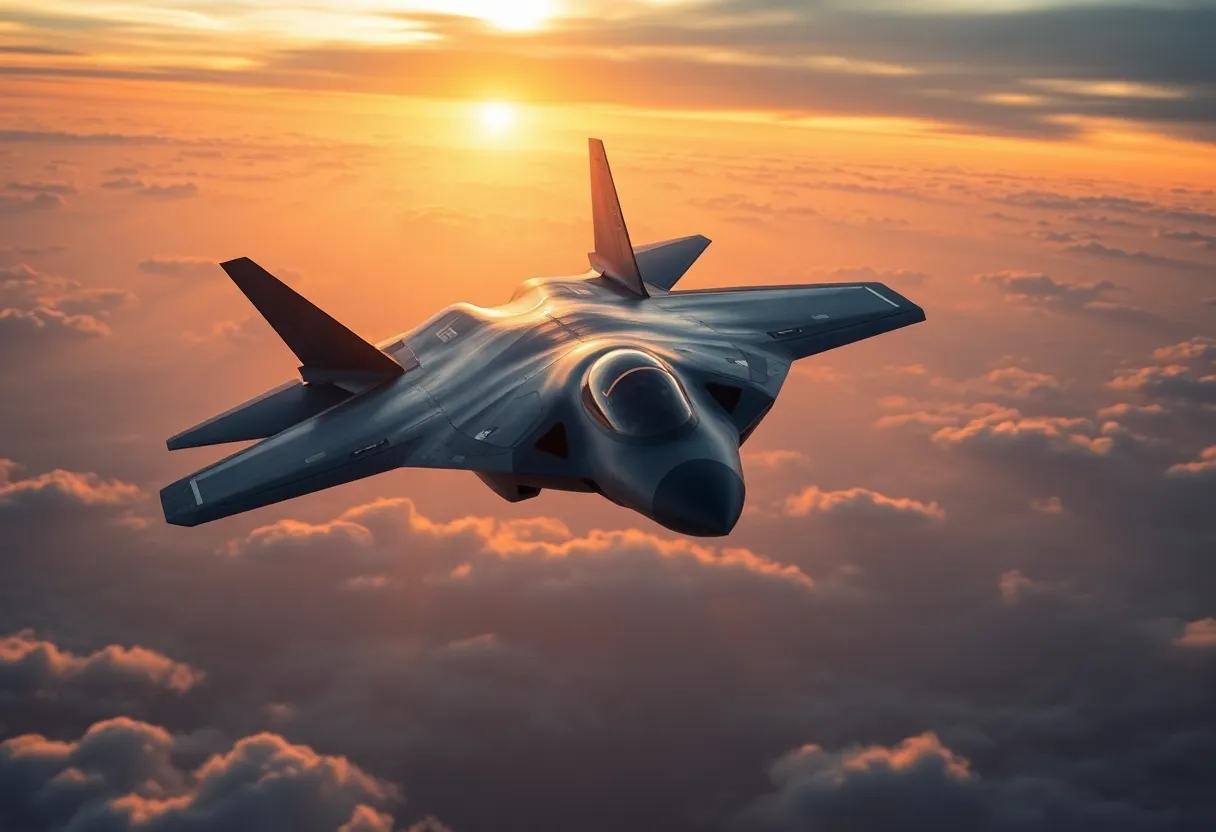

The Boeing F-47 fighter jet demonstrates cutting-edge stealth technology.
President Donald Trump has introduced Boeing’s F-47 fighter jet, a key component of the U.S. Air Force’s Next Generation Air Dominance program. With an initial investment of $20 billion, this jet is designed to enhance U.S. aerial capabilities in response to growing military competition, especially with China. Featuring stealth technology and integration with advanced drones, the F-47 aims to significantly bolster America’s defense strategy and adapt to modern warfare needs. However, critics express concerns regarding the costs involved in its development.
In a significant announcement, President Donald Trump has unveiled Boeing’s latest creation, the F-47 fighter jet, which will be part of the U.S. Air Force’s Next Generation Air Dominance (NGAD) program. This new jet is intended to address the increasing military competition, particularly with China, as the U.S. aims to maintain its air superiority.
The contract value for the initial production of the F-47 is estimated at around $20 billion. This hefty sum reflects the importance and urgency of enhancing the Air Force’s capabilities amidst rising tensions on the global stage. The F-47 is set to replace the well-known F-22 Raptor and bolster America’s defense strategy significantly.
The F-47 boasts impressive stealth capabilities, which officials describe as “virtually unseeable”. This jet will be fitted with cutting-edge technology aimed at providing what many experts are calling “unprecedented power” in aerial combat scenarios. It is expected to excel in challenging environments, especially in regions where adversaries like China are ramping up their military technology.
Another exciting aspect of the F-47 is its ability to work seamlessly with advanced drones, known as Collaborative Combat Aircraft (CCA). These drones will act as “loyal wingmen”, supporting the F-47 in various missions. This cooperative approach to aerial warfare represents a significant shift in military strategy, combining human and robotic efforts for maximum effectiveness.
The F-47, part of the broader NGAD initiative, aims to enhance the U.S. military’s aerial combat capabilities compared to current fleets. By focusing on factors like stealth, range, and operational effectiveness, the Air Force intends to prepare for high-stakes engagements, particularly in the Indo-Pacific region. The urgency is highlighted by China’s recent tests of its own sixth-generation fighter jets, putting the pressure on the U.S. to innovate.
Despite the excitement surrounding this new project, there are valid concerns. Critics are looking at the high costs associated with developing the F-47, especially since the Pentagon is already navigating complexities with the F-35 program, which is projected to reach an eye-watering $1.7 trillion over its lifetime. The Air Force aims to produce more F-47s than its current fleet of approximately 180 F-22 jets, which adds to the overall investment burden.
In a strategic twist, Trump has signaled that the U.S. may offer downgraded versions of the F-47 to potential allies, which could shift the dynamics of international military commitments and partnerships.
The F-47 will not just rely on stealth and speed; its development includes cutting-edge technologies such as artificial intelligence and advanced electronic warfare systems. Integrating these systems is seen as crucial for modern warfare strategies, enhancing operational capabilities and adaptability.
Interestingly, this program was previously halted by the Biden administration for review, reflecting a thoughtful approach to military spending and necessity. However, after a thorough evaluation, the importance of the F-47 initiative has been reaffirmed.
Trump’s administration is viewing this contract as a vital investment in the U.S. industrial base, especially as competition with nations like China intensifies. The commitment to developing advanced military technology not only aims to enhance defense capabilities but also seeks to stimulate the national economy by creating jobs within the defense sector.
With all these developments, the F-47 jet represents a bold step forward for American military aviation, integrating state-of-the-art technology and a vision for future warfare. As the situation evolves, many will be watching closely to see how the F-47 shapes the landscape of military air power.
News Summary The Trump administration's recent changes to the National Endowment for the Arts (NEA)…
News Summary Mexican President Claudia Sheinbaum has firmly rejected U.S. President Donald Trump's proposal to…
News Summary Colin Jost and Michael Che brought their comedic flair to Weekend Update, tackling…
News Summary A catastrophic collision near Yellowstone National Park resulted in the tragic loss of…
News Summary Mark Carney's election win has ushered in a transformative period for Canada, emphasizing…
News Summary The sudden termination of AmeriCorps funding in Iowa has resulted in significant job…